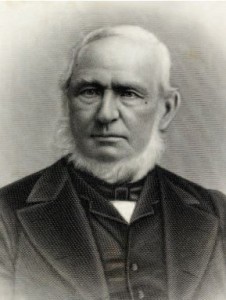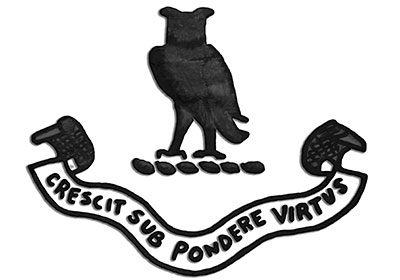 Jonathan Thorne was born on April 20, 1801, to Samuel and Phoebe Thorne of Nine Partners, Westchester County, NY. Jonathan’s birth occurred in the original Thorne building which was a combination home and quite prosperous general store that was situated in close proximity to the brick Nine Partners Quaker Meeting House. Jonathan died on Oct 11, 1884 in New York after a long, energetic, prosperous and meaningful life. He was buried in the family plot which he had endowed as one of the original founders of Woodlawn Cemetery, Jerome Ave, Bronx, NY.
Jonathan Thorne was born on April 20, 1801, to Samuel and Phoebe Thorne of Nine Partners, Westchester County, NY. Jonathan’s birth occurred in the original Thorne building which was a combination home and quite prosperous general store that was situated in close proximity to the brick Nine Partners Quaker Meeting House. Jonathan died on Oct 11, 1884 in New York after a long, energetic, prosperous and meaningful life. He was buried in the family plot which he had endowed as one of the original founders of Woodlawn Cemetery, Jerome Ave, Bronx, NY.
As a young man, in 1820 he went to New York City to work in the dry goods business. There he met and married Lydia Ann Corse. She was born on Dec 27, 1805 and was the daughter of Israel Corse and Lydia Troth, one of eleven Corse children. Lydia and Jonathan were married on July 9, 1823 in New York City, a union that lasted forty-nine years until Lydia’s death on October 14, 1872 in London, England while traveling abroad with her husband and son, Samuel. Like the Lydia’s family, Jonathan and Lydia had eleven children, but only seven lived to adulthood. A list of Jonathan’s and Lydia’s children and their life spans is provided at the end of this narrative.
Shortly after they were married, Jonathan and Lydia returned to Nine Partners. After a few years of living and working there, in 1830, Jonathan decided that his future was to best unfold in New York City where he went into his father-in-law’s leather business along with his brother-in-law, Barney Corse. The Corse offices were located at Jacob and Ferry St. In 1832, two years after joining the firm, Jonathan bought out Barney’s interest thereby becoming his father-in-law’s sole business partner.
Jonathan had been raised and remained a steadfast Quaker. He had grown up during the time when the Quaker debate between the conservatives and the reformists was raging. He and the other Thorne’s sided with the liberal Hicksites who retained the Nine Partners Meeting House. The conservatives took over the Boarding School Meeting. In 1835, when it was clear that he and Lydia were committed to living in New York City, Jonathan applied for and received a removal certificate which allowed him to transfer his family’s meeting attendance to the Hester Street Meeting in New York, located at the corner of Elizabeth Street. Jonathan and his spinster daughter, Phebe Anna Thorne, known later in life as “The Quakeress”, founded The Society for the Prevention of Cruelty to Children, a school which has a continuing legacy today in a school for children named for Phebe known as The Phebe Anna Thorne School managed under the auspices of Bryn Mawr College. Jonathan and Lydia first lived on Cliff Street, then moved to #3 Washington Square which had been laid out in 1826. The couple later moved to Orchard Street, considered one of the finest locales in New York City at the time. Orchard Street was located near the Battery was convenient to the Corse Tannery on Pea Street. In the 1830’s only one-sixth of Manhattan was filled with houses and shops. In the 1840’s and 50’s, as the lower city grew and became highly populated due to the steamship lines bringing thousands of immigrants to New York, many of the wealthier New Yorkers moved northward, as did Jonathan and Lydia in their final move to 524 Fifth Avenue.
Jonathan quickly established himself as a capable and worthy businessman. Ever true to the ethical behavior inherent to Quaker belief, Jonathan consistently enjoyed a notable reputation for honorable dealings and for extending a charitable helping hand to many good causes. His tanneries continually prospered, and men in the marketplace often said that they would rather buy seconds from Jonathan Thorne than firsts from other leather merchants. As the tanning business grew, he bought large tracts of hemlock forest in Sullivan Country, PA (near Williamsport), where he and partners established additional tanneries. (It is from those hemlock forests that the Thorne family’s current day mineral rights interests are derived.)
As the 19th Century progressed, Jonathan’s business interests steadily broadened beyond tanning to include banks, insurance, gas for lighting, the 6th Avenue Railroad, coal mining and distribution of food supplies. It would seem, therefore, that Jonathan was somewhat of a futurist and was attracted to progress, particularly showing a strong interest in transportation as an important means of social advancement. He had observed the economic boom created by the advent of regularly scheduled shipping from New York’s harbor, and saw the further impact of the first clipper ships which were first launched 1843. His children doubtless rode the first horse drawn railroad established in 1832 between Price and 14th Streets, and he surely found great interest in the steam powered British ships that began arriving in 1838.
At the death of his father in 1849, Jonathan inherited the family homestead, Thornedale, in Dutchess County, NY. He made substantial improvements to the property in order to convert the land from pure farming to a suitable summer residence. In a further effort to teach the local farmers a better sense of enterprise, he decided to begin rearing ‘blood cattle’ with pedigree and recordable genetics. He ran the cattle operation until 1854 when his son, Samuel, took it over. Samuel and F. Rotch, an adviser, left for the U.K. with the order to buy the best animal they could find at any price. They selected a mighty bull named Grand Duke, which they purchased for a thousand guineas, the highest price ever paid for a single animal at that time. As the years progressed, the Thorndale herd took its stand as one of the best and most valuable in the world.
Jonathan lived out his days as a prosperous, generous and highly regarded person. He seemed to weather the storms of life with a sense of purpose, inquisitive curiosity, and an inherent sense of discipline. He was known for his daily walks and congenial greetings to everyone he encountered regardless of status or wealth. The legacy that his descendants have today is the result of his foresight and wisdom when, in his will, he directed the sale of his Pennsylvania lands while retaining the mineral rights which he gifted in equal parts to four of his sons.
Jonathan’s and Lydia’s Children:
- Mary Elizabeth Thorne: Born on May 2, 1824; Died on Jul 27, 1843.
- Edwin Thorne: Born on Jan 20, 1826; Died on Mar 25, 1889.
- Phebe Ann Thorne: Born on Feb 10, 1828; Died on Aug 25, 1909.
- Samuel Thorne Jr: Born on May 31, 1830; Died on Sep 12, 1833.
- William J. Thorne: Born on Apr 21, 1833; Died on Aug 16, 1835.
- Samuel Thorne: Born on Sep 6, 1835; Died on Jul 4, 1915.
- Jane D. Thorne: Born on Dec 24, 1837; Died on Mar 14, 1842.
- Emma Louisa Thorne: Born on Nov 8, 1840; Died on May 10, 1842.
- Jonathan Thorne, Jr: Born on Apr 5, 1843; Died in 1920.
- William Thorne: Born on Sep 7, 1845; Died on Jan 10, 1907.
- George White Thorne: Born on 6 Oct 1847; Died on 20 Apr 1883.
As a further footnote to Jonathan’s life, two years after Lydia’s death, Jonathan remarried Eliza Fox Merritt (daughter of George S. Fox and Rebecca L. Fox) on June 6, 1874 in New York. Eliza Fox Merritt died on 6 Apr 1891 in New York. Eliza and Jonathan had no children together.
Jonathan Thorne in Memoriam 1801-1884 This 28 page book includes testimonials to the integrity and upright character of Jonathan Thorne, accompanied by resolutions of sympathy tendered by his business associates, and by several corporations with which he was connected, together with tributes of the press, have been thus embodied by his children as a legacy which cannot be affected by the mutations of time, and as a memorial to be cherished and revered by his descendants.

